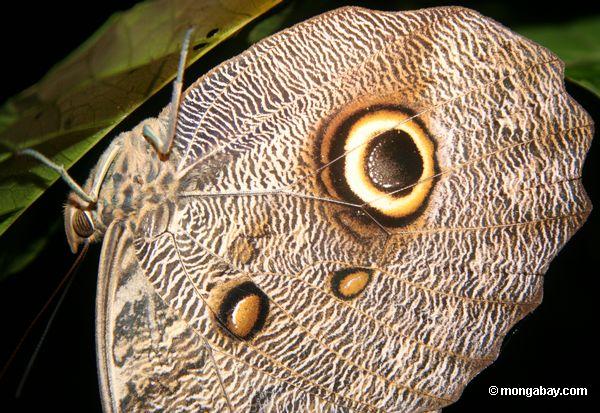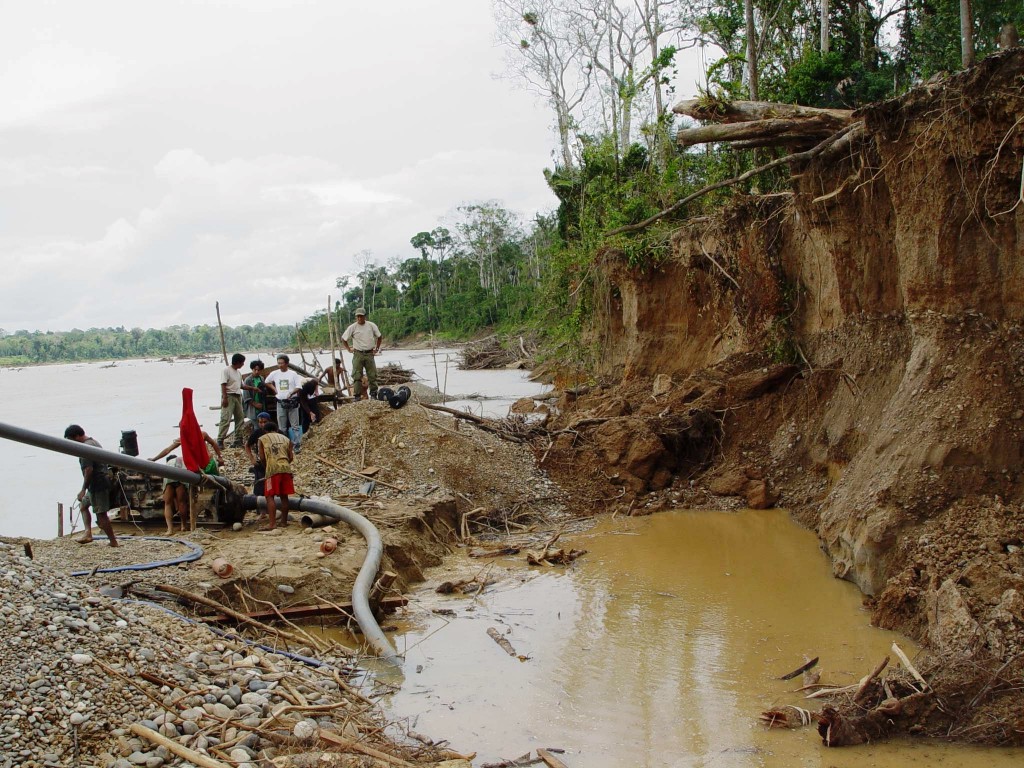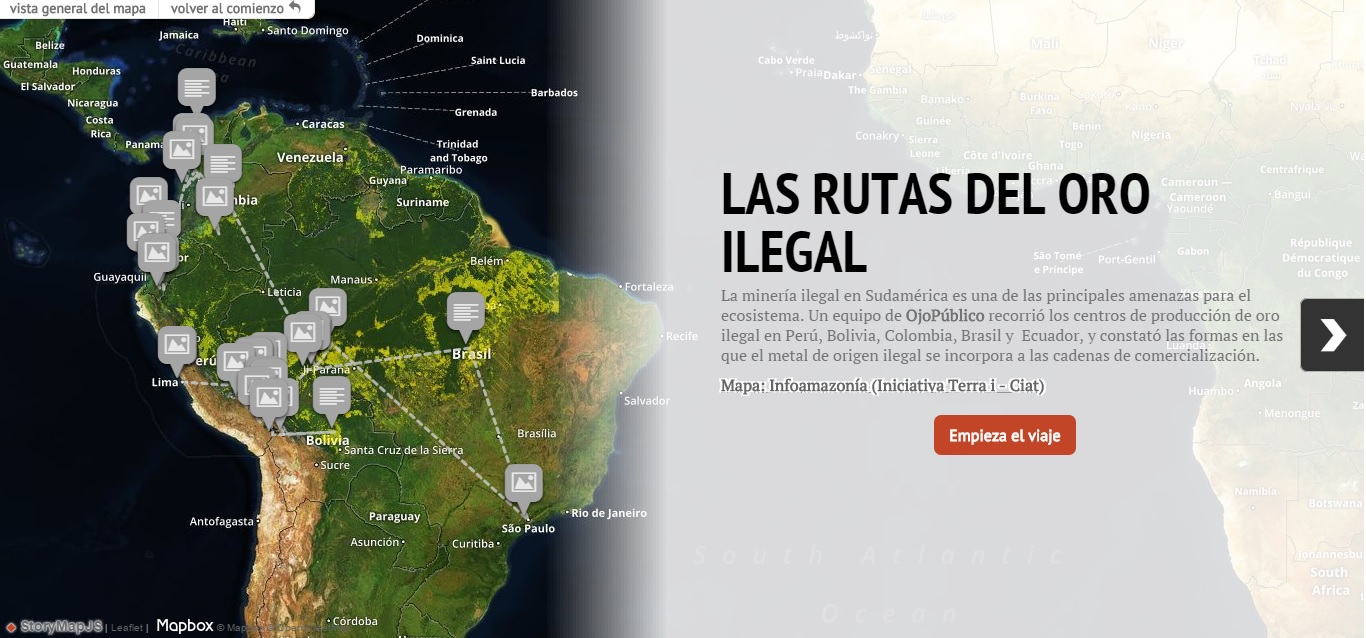Pregnant mothers, children, and even adults could face health problems from gold mining pollution in Amazonian Peru

An aerial view of artisinal open pit gold mining in the Amazon. Photo by: Rhett A. Butler.
Artisanal, often illegal gold-mining, has swept across portions of the Peruvian Amazon over last decade, driven in part by a rising price in gold. The unregulated industry has resulted in widespread deforestation leading to an environmental disaster. But experts have also raised concern over the health of residents in the region due to possible mercury pollution. Now a new study in the Royal Society of Chemistry finds, for the first time, that mercury pollution has moved rapidly downstream and could be impacting communities at least 560 kilometers (350 miles) away from mining sites, in part due to eating mercury-polluted fish.
“The main message is that people likely need to avoid eating regular meals of carnivorous fish downstream from mining activities—not just a few kilometers downstream, but hundreds of kilometers downstream,” co-author William Pan with Duke University told mongabay.com.
Once mercury enters a river system, it is ingested by microorganisms which convert the element into a highly neurotoxic form known as methylmercury. When eaten themselves, the microorganisms pass the mercury up the food chain. With every link of the chain, the amount of mercury accumulates. This means, top predator fish have the highest levels. And people, who eat these fish, are putting themselves at risk.
“For pregnant women [in the region], I would recommend not eating any carnivorous fish,” Pan said, although he recommended “moderation” for children consuming carnivorous fish in the region.

Mining is rampant along the upper reaches of the Madre de Dios River in southern Peru. According to Global Forest Watch, there have been more than 3,000 FORMA alerts in the region shown since 2006, with more than 57,000 hectares of tree cover lost from 2001 through 2012. Click to enlarge.
“Non-carnivorous fish are, for the most part, safe to eat multiple meals per week,” he continued, adding that “fish are an excellent source of omega-3 fatty acids, so the message needs to be carefully communicated.”
Small-scale miners use mercury to separate gold flakes from soil and sediments. But as a potent neurotoxin, mercury can drastically injure a person’s central nervous and immune system, leading to memory and cognitive problems as well as tremors. In children—or when passed down by pregnant mothers—high mercury exposure can lead to language issues, seizures, and even retardation. In especially high doses, mercury can lead to insanity, paralysis, and death.
In order to discover how much mercury non-mining locals in the area may be exposed to, Pan and colleagues sampled sediment and water at 62 sites close to 17 Amazonian communities near the Madre de Dios River. Many of the communities in the region are made up of indigenous tribes. As expected, the researchers found significantly higher levels of mercury in the sediment and water close to artisanal mining hotspots as well as downstream.
“Communities downstream and nearest to mining sites are at greatest risk,” said Pan, “those from the confluence of the Rio Colorado to Rio Inambari,” both of which are tributaries of the Madre de Dios River. Previous research found high mercury levels in both fish and people in the region’s capital, Puerto Maldonado, but this new study surveyed much further down river.
The team also tested 200 fish specimens purchased from fishers in many of the sites, including 123 of which were carnivorous fish.
“We believe these fish species in the paper are representative of commonly eaten species,” co-author, Heileen Hsu-Kim also with Duke University, told mongabay. “About one-quarter of the fish from the Madre de Dios River had mercury levels that exceeded WHO guidelines for human consumption. The fraction was greater for higher tropic level species (i.e., carnivorous fish).”
The team have based their recommendations on the assumption that locals eat fish twice a week, but this could hugely underestimate the importance of fish to people in the area.
Peruvain journalist, Güido Lombardi, voiceover detailing the damage caused by gold mining in Madre de Dios in southeastern Peru in video that went viral (Spanish).
“We have preliminary data from household health surveys indicating that fish consumption is actually much higher in many communities, which could increase the body burden and exceed safety limits even for healthy adults,” said Hsu-Kim.
In recent years, the Peruvian government has taken an increasingly hardline against artisanal gold-mining, but Pan says this may be exacerbating the situation.
“The government needs to create a public-private with miners and rebuild trust…Improved relationships can make significant improvements in land tenure, banking, and reclamation of land. Beyond, this, I think NGOs and universities can play an enormous role in creating change now through partnerships with communities as they are perceived as less of threat to their sustainability.”
To this end, the researchers are collaborating with Peru’s Ministry of Health to communicate the results of the study to local communities, including meeting with village leaders.
According to the researchers, though, the damage could go much further than the 560 kilometer area surveyed. For one thing, the team had originally hoped to survey a much larger region for mercury pollution.
Owl butterfly (Caligo idomeneus) in the Tambopata National Reserve in the region, which is one of the most biodiverse in the world. Photo by: Rhett A. Butler.
“Our original hypothesis, which we had submitted for support to the MacArthur Foundation, was to measure impacts into Bolivia up to the Beni River,” said Pan.
The mercury, which is often mishandled by uneducated miners, could also be entering the atmosphere.
“The mercury used for the mining process is also probably released to the air,” said Hsu-Kim, who noted that airborne mercury pollution “has the potential to transport over across continents and oceans. A UN report from 2013 estimates that artisanal small-scale gold-ming is the major source of mercury to the atmosphere.”
Still, it’s unlikely gold mining is going to go away anytime in the region, especially if the price of gold remains high.
“Gold is a major source of income for Peru and for families who live in Madre de Dios,”said Pan. “It is a game changer for many families, but whether this is a long-term positive change for families is hard to determine.”
– This report was originally published in Mongabay and is republished by an agreement to share content.






